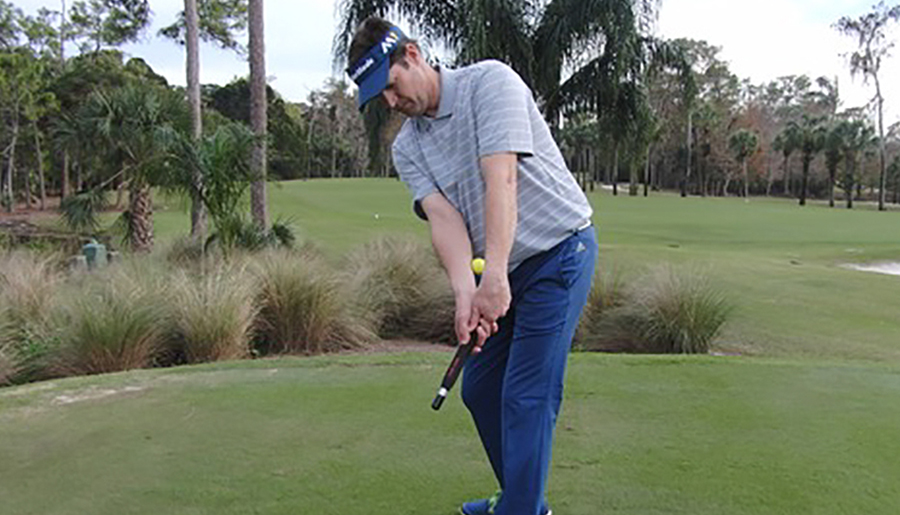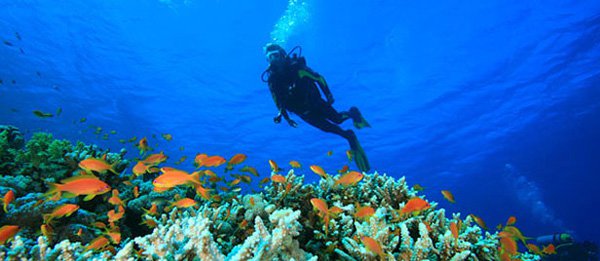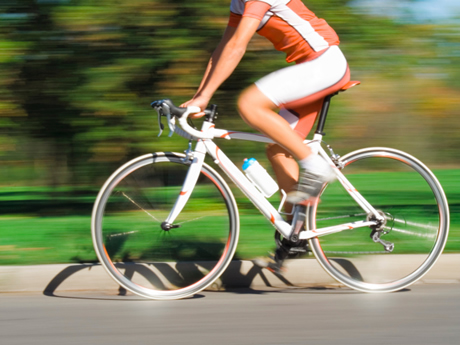CAN THIS GUY WIN IT ALL? That's the question I was asking myself a week before the Citgo Bassmaster Classic, as I climbed into the boat for a day of "scout fishing" with the incredibly laid-back Luke Clausen. By the end of the day, after watching how the 27-year-old methodically broke down this huge chain of lakes in Kissimmee, Fla., I thought he had as good a shot as anybody. I shouldn't have doubted. Clausen won the BASS tour's "Super Bowl" event in a walk, staking a lead on day one with a record 29-pound 6-ounce stringer of five fish, and he never looked back. As weather conditions deteriorated throughout the competition, he held his lead on the way to a record three-day total of 56 pounds 2 ounces. That earned him the $500,000 winner's check. How did he do it? Simple. He had the best plan. The 51 competitors had an overwhelming 107 square miles of water in four lakes to cover, but Clausen focused all his efforts in a relatively small corner of Lake Kissimmee. Instead of zipping from spot to spot, he patiently and deliberately concentrated three days of fishing on an area not much larger than a few football fields. Watching him find this zone during our scouting session taught me an enormous amount about how an angler should break down a bass lake. Just over a week before the Classic started, I arrived at a remote boat ramp on the eastern shore of Lake Kissimmee. I had taken a red-eye flight from Denver the night before in order to meet this man, one of the few competitors who had agreed to let me come along and pick his brain during the event's official practice session. I wanted to ride with Clausen because he was a dark horse, and because it would be interesting to watch a guy from the other side of the country—he's from Spokane Valley, Wash.—wrestle with the intricacies of Florida's most legendary bass waters. His learning curve, I thought, would be steep.
But when Clausen met me at the boat ramp, the signs were all there that this young angler knew something I didn't. He was loose, confident, and an open book with his information. It almost seemed as though he either knew he had the Classic in the bag or didn't even think he had a chance.
After I made a short-term vow of secrecy, he proceeded to spill the beans, explaining the where, when, and why of what he intended to do.
"There's no such thing as a secret bait," Clausen said with a wry smile. "It's all about tunnel vision, developing your instincts, and having a plan."
Still, I was somewhat skeptical. Clausen hailed from a region predominated by trout, salmon, and steelhead fishing. Could he compete with the Southern boys on their own water?
"I fish for slimers"—Clausen's nickname for trout—"when I'm back home, but that's just for fun. It's what you do when you want to sit on a cooler and relax." He laughed. "But ultimately, I've learned that a fish is a fish, and they follow things like currents and food and water conditions. It doesn't matter where you're from. It matters if you know how to follow what fish will do."
It all starts with some basic principles. If you apply these lessons to your own fishing, you'll be able to scout water better and catch more bass. Who knows? Master them and maybe you'll even win a big-money tournament.
LESSON 1: Learn the lake
Before the Classic, many commentators thought local favorites like Floridians Preston Clark and Terry Scroggins would have a distinct advantage in knowing the water. As it played out, Clark made a big splash on day one (coming in second to Clausen), and Scroggins followed with a dramatic second-day charge, but Clausen held them off by applying universal fish-finding rules to his tournament strategy.
"The first thing you do is get a map and learn the water," Clausen told me. "It sounds silly, but if you take the time to look a map over, that will take a lot of the guesswork out of fishing."
A map is your best shortcut. It will show you exactly where to locate the deep spots, the channels, the sheltered coves, and sometimes the cover. And knowing these physical qualities of any piece of water creates a foundation for your strategy.
By the second day of practice, when we were fishing together, Clausen was focused on Lake Kissimmee, enough so that he was planning to make the roughly 40-mile run by boat from the launch at Toho at the start of competition. He was willing to sacrifice fishing time in favor of working areas he thought would offer shots at larger fish.
"I have a feeling that this Classic will be won on Lake Kissimmee," Clausen prophesied. How did he know this? Well, the map was a start, showing that the lake's intricate shorelines and diverse vegetation offered a variety of options to work with in a range of unpredictable conditions.
Fishing reports are another kind of research that can tell you a lot about a lake. Results from previous tournaments had shown him that Kissimmee had produced larger bag weights, on average, versus the other lakes in the chain.
I wondered aloud, "Okay, if you think you know some spots to hit, how do you know what bait to use?"
Clausen grinned. "You have to know what they're willing to eat."
LESSON 2: Be the bass
Bass behavior is easily influenced by the time of year, water temperature, and prevailing weather conditions. For example, in winter, they may look for weed mats and warmer water; in summer, they may prefer to school around cool creek mouths or to find deeper cover. Clausen made the point that the best anglers are as in tune with the conditions as the fish are.
Much of the talk before the Classic was based on the hope that warming weather would have the bass guarding beds in peak spawning mode, making them ideal targets for sight fishermen. In truth, that might have been an advantage for Clausen, who comes from the West Coast school of bass fishing, where clear water makes sight casting a staple.
But during the practice sessions, chilly weather and picky fish led Clausen to rule it out. The spawn would be a factor, but where the fish staged and spawned—and more important, what they'd be willing to eat—would be the $500,000 question.
Many of the competitors had assumed that if the weather stayed cold and kept bass off the beds, the Classic would be a game of flipping heavy baits into weed mats. Clausen took a subtler view, however, envisioning an in-between scenario where the bass would be looking for hard-bottom spawning habitat but also hanging in slightly deeper water (3 to 6 feet) under isolated weeds and among lily pad roots. And knowing where the fish are is the key to determining what type of lure will have the most appeal for them.
During our practice session, Clausen found his go-to bait, a junebug-colored Mann's HardNose Worm.
"If I fish pad roots and isolated weed patches in, say, 3 to 5 feet of water," he said, preparing for a cast, "I think something like this worm will do well. It's pretty much a do-all bait for fish on the bottom."
As it turned out, one of Clausen's keys to victory was slowly and deliberately dragging that worm among pad roots, just as he had suggested.
We were getting somewhere, finding fish and determining the best way to catch them, but a few nice bass weren't going to win the Classic. Clausen needed to find lots of big fish.
LESSON 3: Figure out trends
The first place Clausen took me was an area dotted with arrowhead grass on the northeastern shore of Kissimmee. Arrowheads grow where the lake bottom is hard and shallow, ideal spawning habitat. He made several casts and hooked up on a 2-pound bass. After several more casts, he caught another fish roughly the same size.
Promising results, he said, but not good enough. The big fish were in slightly deeper water.
He made a short run to the west, then shifted his attention to flipping heavy, hookless soft plastics (an Arkansas Beaver with a 1½-ounce weight) into weeds. First, we hit mats of Kissimmee grass, then hydrilla, and finally, thick alligator grass. He explained that he could figure out where to find the most big fish by establishing trends: Are they bunched under a certain type of vegetation? Are they on the points, in the channels, or up in the shallows?
I watched his eyes go wide when a huge fish in one particular strip of alligator grass played tug-of-war for about 10 seconds before letting go, earning a waypoint marker on Clausen's GPS.
We spent the rest of the day experimenting with a swim frog in sparse patches, which produced several chases and a couple of bites.
The exercise confirmed for him an important trend. He knew the big bass weren't concentrated under the arrowheads in shallow water, but neither were they schooled up under heavy weed mats. The sensible compromise would be to work the isolated weed patches, namely lily pads and root clusters, which is exactly what he ended up doing in competition.
"What happens if today's blueprint doesn't work tomorrow?" I asked. "If you pin your hopes on one spot that might be good one day but is blown out the next, how do you adjust?"
This turned out to be the Achilles' heel for many anglers who would compete in the Classic. But Clausen had already found a way to insulate himself against the elements.
LESSON 4: Have a backup plan
Over the course of a few days, either in a big tournament or just on a weekend fishing trip, the elements can completely screw up your carefully conceived plan. The wind that was steady from the north might suddenly blow from the southeast. The barometer will drop or rise. To fish successfully through changing conditions, Clausen explained, the key is to find an area that offers options in close proximity. In other words, pick a zone where you can stay on fish if you switch your tactics. Clausen hinted to me that he had found some good "all-around" water that would allow him to adjust as necessary.
As the Classic unfolded, a series of squalls blew across the Kissimmee region, dirtying the water and ultimately putting the bite off. The average bass caught on day three was, perhaps, a 2-pounder, making the bags much lighter than they were on day one.
But Clausen had given himself choices. Water clarity in the section he'd picked out wasn't as affected by the weather as in some other areas, and more important, he was able to modify his technique when 40-mph gusts buffeted his boat, forcing him to stand on his trolling motor to hold a casting position.
Wicked weather sent many of the Classic's big hitters scrambling after their go-to spots had been blown out, but Clausen was able to stay put by fine-tuning his approach. He fired quick casts and dipped his rod tip in the water to ensure that his lightly weighted bait would stay on the bottom. He knew the fish were there; it was a matter of keeping those casts under control and working the bait slowly.
Clausen ended up catching the biggest fish of the day on Sunday (5 pounds 13 ounces), which won him a $1,000 bonus and proved to be the margin of victory over second-place finisher Rick Morris.
LESSON 5: Trust your gut
At the end of the tournament, Clausen's ability to trust his gut and stick with his plan were probably what won it for him.
"I don't listen to the dock talk, of where fish may or may not be biting. That usually throws you off," he explained. "If you find a bite and trust your ability to catch fish there, it's worth going back."
After Clausen's second-day production dropped to roughly half of his catch on day one, and with the title on the line, one might have expected him to mix things up, and maybe move to new water.
He admits he was planning to run to a few different spots on the last day of the Classic, but in the end, he didn't. He knew the wind and rain had his competitors perplexed.
"Conditions change every day," Clausen said. "You trust your own instincts to adapt to what's happening. I was so comfortable with how many bites I had in that area during practice and on the first day that I knew the fish would be there. It was a matter of slowing things down and working that area again, even more deliberately."
When others might have been second-guessing themselves with their stomachs tied in knots, Clausen coolly, calmly plugged ahead. He not only caught his limit on the final day (many of the other pros who were scrambling around by then did not)—he found fish that were large enough to maintain his lead over the field and to walk away with the title.
Following his win, Clausen and I spoke over the phone. He was on that same cool, even keel. After all, he has now fished in two events with a $500,000 winner's purse, including the 2004 FLW championship, and won them both.
"The pre-fishing played a huge role in winning," he said. "I was comfortable with where I wanted to go, and what I wanted to do, right from the start. It turned out that having a big first day gave me the margin I needed to stay ahead."
Indeed, by being the man with a plan, maybe Luke Clausen won the Classic a week before it ever started. At least I think he did.
Impact Snap Trains Proper Hand Release


3 Drills That Will Improve Your Pedal Stroke

Copyright © www.mycheapnfljerseys.com Outdoor sports All Rights Reserved